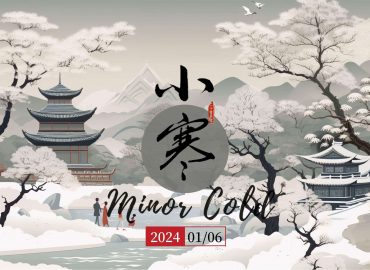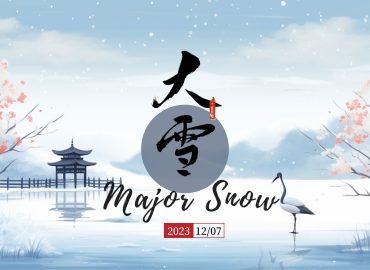Season Of China – Minor Cold
” Minor Cold” or “Xiaohan,” the 23rd solar term among the 24 Chinese solar terms, is the 5th term in […]

” Minor Cold” or “Xiaohan,” the 23rd solar term among the 24 Chinese solar terms, is the 5th term in […]

“Winter Solstice” is the 22nd solar term among the 24 Chinese Solar terms and one of the earliest established in China. Over 2500 years ago in the Chunqiu Period (approximately 770 to 481 BCE), ancient observers determined the timing of the Winter Solstice using sundials, placing it between December 22nd and 23rd when the sun’s celestial longitude reaches 270°.

“Major Snow”(DaXue), the 21st solar term in the Chinese lunar calendar, marks the official onset of mid-winter, usually falling around November 22nd or 23rd when the sun reaches the celestial longitude of 255 degrees.

Minor Snow(XiaoXue), the 20th solar term in the Chinese lunar calendar, marks the beginning of winter.

Start of Winter (Lidong), the19th of the 24 solar terms, marks the beginning of winter. It occurs when the sun’s ecliptic longitude reaches 225 degrees, typically falling between November 7th and 8th on the Gregorian calendar.

“Frost’s Descent,” or Shuangjiang(霜降) , the eighteenth solar term in the solar calendar, marks the conclusion of autumn and the beginning of winter.

Cold Dew (Hanlu), the 17th solar term among the 24 in the Chinese calendar, marks the fifth term of the autumn season. It occurs when the sun reaches the celestial longitude of 195° and typically falls between October 7th and 9th on the Gregorian calendar.

“Autumn Equinox,” the 16th of the 24 solar terms, occurs around September 22-24 each year when the sun reaches 180 […]

“Bailu,” or “White Dew”, the 15th solar term out of the 24 in the Chinese lunar calendar, typically falls around […]

The start of autumn, or “Liqiu” is the thirteenth solar term in the 24 solar terms. It falls on either […]